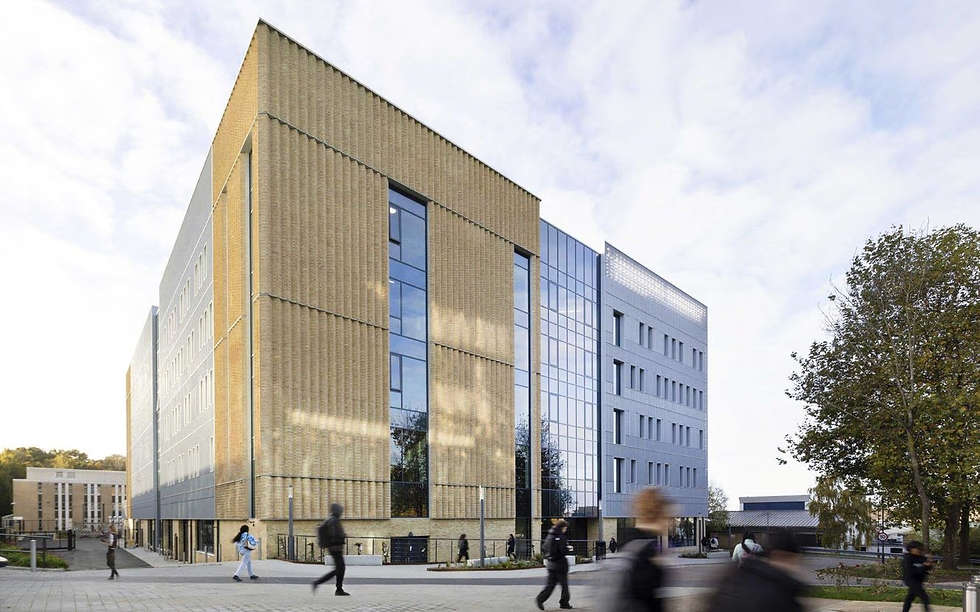Chapman Taylor's heritage-sensitive Moat Lane regeneration scheme
- Heather Fearfield
- Oct 17, 2021
- 2 min read

Aerial view of Towcester, Northamptonshire (by Mark Nichol Photography) showing the Moat Lane project by Chapman Taylor
The Moat Lane mixed-use regeneration scheme has completed in the historic UK town of Towcester, Northamptonshire. Moat Lane is a residential-led regeneration project which has been sensitively built around a scheduled ancient monument (the restored Bury Mount, the remains of an ancient motte and bailey castle).
The BREEAM Very Good development is designed to help regenerate Towcester High Street and the wider town centre, and includes a new community building, community space, offices, 132 homes and shops.
The Moat Lane area lies within the Towcester Conservation Area and includes several listed buildings, the schedules ancient monument and registered parkland. The fifty thousand square meter scheme has been carefully designed to ensure that all these elements are treated appropriately.
The Chapman Taylor-delivered masterplan, designed in close liaison with local groups and relevant authorities, provides the Roman market town with new economic, social and community infrastructure which will help ensure the sustainability of the scheme for decades to come.
Chapman Taylor has designed and delivered projects all over the world on which it has worked with local authorities, heritage bodies and others to ensure that heritage buildings and historic environments are saved, protected and enhanced.
Recently, Chapman Taylor spoke to Future Cities Forum about the regeneration of the historic Coventry City Centre South, where the practice provided the masterplan for this urban regeneration project on behalf of Shearer Property Regen Ltd Group.
Associate Director, UK at Chapman Taylor, Daniel Morgans, said:
'City Centre South is an area of wonderful strategic potential because of its position between Friargate/the railway station and the successful Broadgate area; it sits both on the route between the railway station and the city centre and on an east-west axis with Coventry University. The city is growing in population with major automotive and industrial plants such as Jaguar Land Rover as well as a diverse student population.
'The historic street pattern of Coventry was interrupted by badly conceived post-war planning, which had a number of failings, including the imposition of tower blocks in the middle of the street, poor urban legibility and damaged or blocked views. Meanwhile, the best most elegant post-war architecture was itself undermined by insensitive additions between te 1970s and 1990s. There is too much bad architecture and a reliance on outdated retail concepts, such as inward-looking arcades, rooftop parking, huge service yards and multi-storey car parks.
'The over-reliance on retail, which accounts for over 90% of the area's offer, means that the area will decline very sharply if nothing is done to introduce new uses and new functions. To put it bluntly the city centre will die, socially and commercially if it is not transformed.
'Our design for Coventry City Centre South remedies the mistakes of the past, which doesn't necessarily mean everything post-war, while respecting the best elements of the area's heritage and reinstating a permeable street pattern. Our concentration is less on the architecture than on urban renewal - the urban fabric and street patterns.'
.






Comentarios